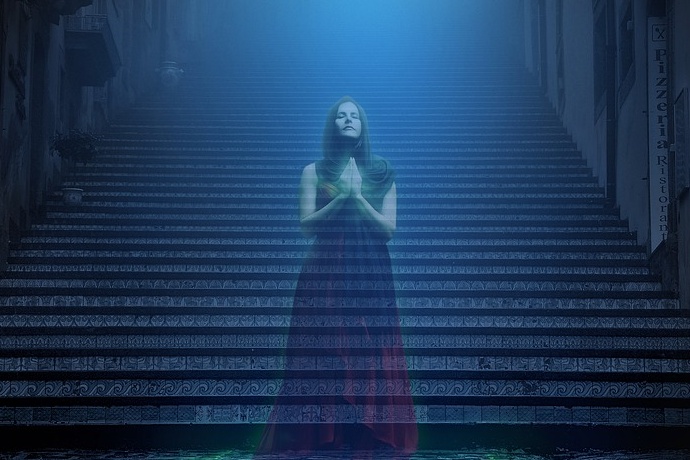Words by Greg Mansfield

Throughout the ages people have wondered, are ghosts real? And, if so, what are they?
Evidence for the Existence of Ghosts
There’s a huge body of anecdotal evidence to support that ghosts exist. Scientists and hard-lined skeptics, however, dismiss such evidence. They automatically assume it’s the result of hallucinations, mistaken identity, sleep paralysis, fraud, trickery, or the effects of alcohol or drugs.
But those who completely discount the existence of ghosts and ghostly phenomena do discredit to themselves and the subject. This is because the doubters ignore much eye-witness testimony that’s arguably reliable. In many cases, multiple witnesses and recorded evidence (including audio recordings and photographs) support the testimony. We should not disregard these cases.
It’s true that most claims of encounters with ghosts can be debunked. However, normal causes don’t explain all of them. In fact, we can’t explain about two percent of all reported cases. And, of course, many of those reports come from rational and honest people. They simply report what they’ve experienced.
If we should ignore all reports of ghosts then we may as well reinvent Western justice systems, which rely on basic human testimony.
Why the Evidence for Ghosts Doesn’t Cut It
Assuming ghosts do exist, it’s doubtful that science will ever acquire or be satisfied by the evidence. The article, The science of ghosts, nicely explains why.
Scientists can’t reliably replicate ghostly phenomena in the laboratory. Even if they could, the resulting evidence would probably fall short of satisfying the entire scientific community.
The difficulty lies in the attempt to use physical tools to capture and record non-physical phenomena. It’s like trying to weigh air with a butterfly net.
Electronics manufacturers have made great improvements to audio-visual equipment and other devices to record the effects of ghosts on the environment. Ghost husters have greatly benefited from this. Meanwhile, pranksters use advancements in computing and imaging software to fake convincing images or videos alleged to be of real ghosts. The unfortunate result is that those who capture clearer evidence take us one step forward, while fakers take us two steps back.
The Importance of Skepticism
A good measure of healthy skepticism is important when dealing with the paranormal. By healthy skepticism, I mean skepticism that’s open to all possibilities. But this doesn’t mean being so open that every claim of a ghostly encounter is automatically assumed to be paranormal.
If you’re a serious enthusiast or investigator, you should avoid being drawn into believing all paranormal claims. Instead, you should first eliminate prosaic explanations and obtain corroboration or supporting evidence.
The Many Types of Ghosts
Whether you’re a true believer or not the question remains – what is a ghost, or what might it be?
When we ask this question it’s like asking, what is an animal? Just as there are many classifications of animals on the planet, there are many types of ghosts.
We can categorize ghosts and ghostly phenomena in many different ways. Today, the most commonly accepted types of ghosts are:
Entities
Entities are the disembodied spirits of deceased human beings or animals. The theory is that each of us (human or animal) has a subtle energy body and consciousness. This part separates from the physical body when we die and moves to another dimension. Entities can interact with the living. They’re stuck in a certain location because of some connection or obsession with the place.
Imprints
Imprints are also known as residuals. They are three-dimensional movies that play over and again in certain locations. They’re past occurrences that replay themselves in present day. People witness them as sights and/or sounds. They don’t interact with their observers. Imprints often pass through walls or things that weren’t there when they existed in the physical world.
Poltergeists
The word poltergeist is German for “noisy ghost.” While some ghosts exhibit poltergeist-like behaviour, only a small number of them are poltergeists. These ghosts make loud, disturbing noises and create horrible smells. They throw things around and cause objects to levitate. Also, they make objects disappear and reappear in other places.
Shadow People
Shadow people are dark, shadowy, and seemingly intelligent entities. They usually appear as dark mists, shadow outlines, or black orbs. They’re also particularly aggressive and devious. Shadow people harass the living, make noises, scratch and push people around, and even trick children into harming themselves. You definitely don’t want these around.
So, what do you think? Are ghosts real?
Have you actually seen or experienced one?
Please share your story! Where and when did your encounter happen? And what type of ghost do you think it was?

Leave a Reply